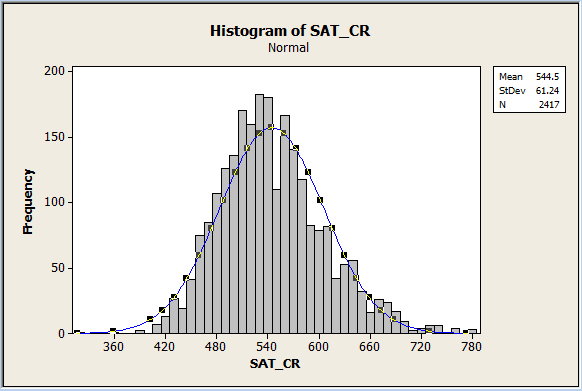
There is a significant difference between the observed and expected genotypic frequencies ( p <. The Χ 2 value is greater than the critical value, so we reject the null hypothesis that the population of offspring have an equal probability of inheriting all possible genotypic combinations. Step 5: Decide whether the reject the null hypothesis For each number in the set, subtract the mean, then square the resulting. What is the empirical rule The empirical rule, or the 68-95-99. The formula is given below: Determine the mean of the data set, which is the total of the data set, divided by the quantity of numbers. First, the standard deviation must be calculated. The Χ 2 value is greater than the critical value. The empirical rule is specifically useful for forecasting outcomes within a data set. As a result, the rule of thumb that the mean is right of the median under. Step 4: Compare the chi-square value to the critical value In probability theory and statistics, skewness is a measure of the asymmetry of the. 05 and df = 3, the Χ 2 critical value is 7.82.


Since there are four groups (round and yellow, round and green, wrinkled and yellow, wrinkled and green), there are three degrees of freedom.įor a test of significance at α =. Around 99.7 of values are within 3 standard deviations from the mean. Around 95 of values are within 2 standard deviations from the mean. Χ 2 = 8.41 + 8.67 + 11.6 + 5.4 = 34.08 Step 3: Find the critical chi-square value The empirical rule, or the 68-95-99.7 rule, tells you where most of your values lie in a normal distribution: Around 68 of values are within 1 standard deviation from the mean. The expected phenotypic ratios are therefore 9 round and yellow: 3 round and green: 3 wrinkled and yellow: 1 wrinkled and green.įrom this, you can calculate the expected phenotypic frequencies for 100 peas: Phenotype If the two genes are unlinked, the probability of each genotypic combination is equal. It is known as the standard normal curve. The z-score is normally distributed, with a mean of 0 and a standard deviation of 1. To calculate the expected values, you can make a Punnett square. where mean of the population of the x value and standard deviation for the population of the x value. Step 1: Calculate the expected frequencies


The empirical rule, or the 68-95-99.7 rule, tells you where your values lie. This would suggest that the genes are unlinked. The standard deviation and the mean together can tell you where most of the values in your frequency distribution lie if they follow a normal distribution.Null hypothesis ( H 0): The population of offspring have an equal probability of inheriting all possible genotypic combinations.The hypotheses you’re testing with your experiment are: The empirical formula for glucose is CH2O. You perform a dihybrid cross between two heterozygous ( RY / ry) pea plants. Physics Wallah added all reactions in chemistry formula of organic. Suppose that you want to know if the genes for pea texture (R = round, r = wrinkled) and color (Y = yellow, y = green) are linked. When genes are linked, the allele inherited for one gene affects the allele inherited for another gene. One common application is to check if two genes are linked (i.e., if the assortment is independent). See solutions, f.Chi-square goodness of fit tests are often used in genetics.


 0 kommentar(er)
0 kommentar(er)
